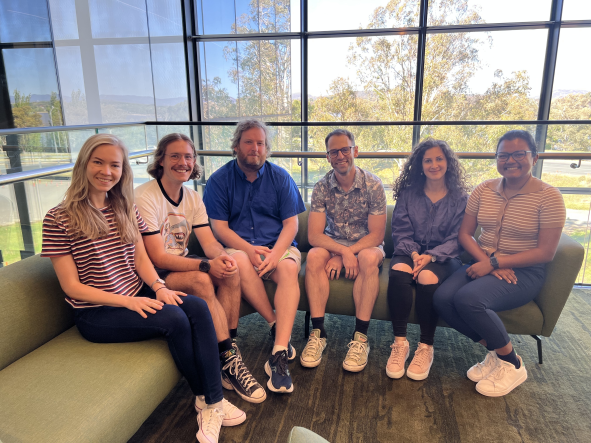New funding boost for CYGNUS-Oz experiment
Members of the CYGNUS-Oz collaboration have received a funding injection of more than $90,000 that will enable the Australian team to play a pivotal role in the international quest to develop directional dark matter detectors.
The Australian National University grant will be used to purchase a camera readout for the CYGNUS-1 Time Projection Chamber (TPC) that will provide more detailed studies of directional particle events in the detector.
The funding was available through an ANU Major Equipment Committee (MEC) grant, which also included $10,000 contributions from the ANU Research School of Physics and the Dark Matter Centre.
CYGNUS-1 is a prototype particle detector being used as a research and development test bed for a future large-scale dark matter experiment.
The prototype is already equipped with a wire readout to capture the ionisation charge from particle events and a photomultiplier has been purchased to capture the optical signal that is also produced by particles that cause scintillation in the detector.
The funding will enable the addition of a highly segmented optical readout to also capture the scintillation light generated in the avalanche region of the detectors; this enables a move from the current coarsely segmented 2D readout to a finely segmented 3D readout.
The Centre investigators applying for the grant were Lindsey Bignell (lead), Zuzana Slavkovska, Peter McNamara, Greg Lane, and Andrew Stuchbery, all from the ANU node.
The ANU CYGNUS-Oz team (from left) Zuzana Slavkovska, Lachlan McKie, Peter McNamara, Lindsey Bignell, Ferdos Dastgiri and Victoria Bashu.
The ANU is the main experimental hub for CYGNUS-Oz, which also includes researchers from the University of Adelaide, the University of Melbourne, and the University of Sydney.
Dr Bignell said the equipment purchase made possible through the funding would have a significant impact on the contribution the Australian collaboration could make to the international CYGNUS project.
“This will result in an instrument that is unique in the world among comparable highly segmented gas TPCs, and will enable several studies that are impossible without an intensified camera,” he said.
“These attributes will position CYGNUS-1 as a unique facility that enables investigations of low-energy particle events to address outstanding research questions that are relevant to building larger-scale detectors in Australia, and in international laboratories,” Dr Bignell said.
The long-term vision is for a distributed network of large directional gas TPCs located at underground laboratories in the UK, Italy, US, Japan, and Australia with world leading sensitivity to dark matter detection, and the capability to perform ‘dark matter astronomy’.

